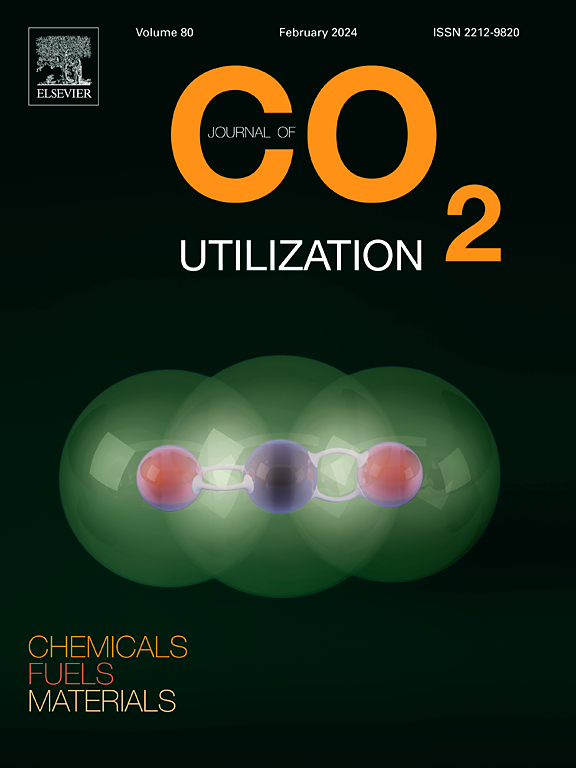Boosting electrochemical CO2 reduction to CO by regulating pressure in zero-gap electrolyzer
IF 8.4
2区 工程技术
Q1 CHEMISTRY, MULTIDISCIPLINARY
引用次数: 0
Abstract
The electrochemical reduction reaction of CO2 presents a promising strategy for both CO2 utilization and renewable energy storage. However, for this process to be economically viable, it must achieve high energy efficiency, high product selectivity, and suppression of the hydrogen evolution reaction (HER) at low cell voltages and industrially relevant current densities. Thus, this paper introduces a high-pressure zero-gap membrane electrode assembly electrolyzer that uses pristine silver nanoparticles (<150 nm) as the cathode catalyst for CO2-to-CO conversion. Operating at elevated CO2 pressures of up to 1.5 MPa and in a highly alkaline environment (2 M KOH) considerably enhanced CO selectivity and energy efficiency by reducing ohmic losses and improving reaction kinetics. At an optimized pressure of 1.5 MPa, a high current density of –350 mA cm⁻2 was sustained at an applied cell voltage of –3.2 V (–3.0 V, IR-compensated), achieving over 70 % CO Faradaic efficiency and 32 % CO energy efficiency. High-pressure operation also suppressed HER by increasing the local CO2 concentration at the catalyst surface, thereby improving CO selectivity. Additionally, salt precipitation mechanisms and their effect on catalyst deactivation were discussed.
通过调节零间隙电解槽压力,促进电化学CO2还原为CO
二氧化碳的电化学还原反应是二氧化碳利用和可再生能源储存的一种很有前途的策略。然而,为了使该工艺在经济上可行,它必须在低电池电压和工业相关电流密度下实现高能效、高产物选择性和抑制析氢反应(HER)。因此,本文介绍了一种高压零间隙膜电极组装电解槽,该电解槽使用原始纳米银(<150 nm)作为co2到co转化的阴极催化剂。在高达1.5 MPa的高CO2压力和高碱性环境(2 M KOH)下运行,通过减少欧姆损失和改善反应动力学,显著提高了CO选择性和能量效率。在1.5 MPa的优化压力下,在-3.2 V(-3.0 V, ir补偿)的电池电压下,维持-350 mA cm⁻2的高电流密度,实现了超过70 % CO的法拉第效率和32 % CO的能量效率。高压操作还通过增加催化剂表面的局部CO2浓度来抑制HER,从而提高CO的选择性。此外,还讨论了盐沉淀机理及其对催化剂失活的影响。
本文章由计算机程序翻译,如有差异,请以英文原文为准。
求助全文
约1分钟内获得全文
求助全文
来源期刊

Journal of CO2 Utilization
CHEMISTRY, MULTIDISCIPLINARY-ENGINEERING, CHEMICAL
CiteScore
13.90
自引率
10.40%
发文量
406
审稿时长
2.8 months
期刊介绍:
The Journal of CO2 Utilization offers a single, multi-disciplinary, scholarly platform for the exchange of novel research in the field of CO2 re-use for scientists and engineers in chemicals, fuels and materials.
The emphasis is on the dissemination of leading-edge research from basic science to the development of new processes, technologies and applications.
The Journal of CO2 Utilization publishes original peer-reviewed research papers, reviews, and short communications, including experimental and theoretical work, and analytical models and simulations.
 求助内容:
求助内容: 应助结果提醒方式:
应助结果提醒方式:


